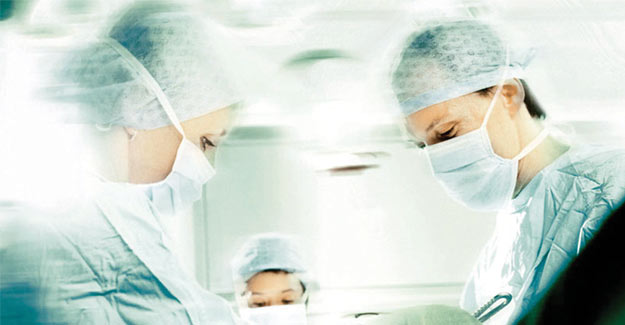
Nonwovens Getting Under Your Skin
The performance of nonwovens in medical applications - both as the basis for advanced wound care products and in protective gowns, drapes and sterilisation packs - is well known, but they also have a number of advantages in surgical procedures for cell integration and tissue regeneration, as well as in the controlled delivery of a broad range of beneficial drugs and substances.
Nonwoven structures as tissue scaffolds, for example, provide greater surface area than most other biomedical textiles, bringing specific benefits to implantable devices. In particular, the ability to encourage cellular growth through specific spacing, layer thickness and material integrity allows for customised performance and controlled absorption profiles.
Most users of these devices require nonwoven scaffolds to be composed of absorbable biomaterials so that regrowth can take place before the materials then disintegrate. Specialist companies such as Biomedical Structures (BMS), based in Warwick, Rhode Island, USA, make nonwoven tissue scaffolds from a variety of synthetic, absorbable polymers, including PGA (Polyglycolic acid), PLLA (Poly-L-Lactic acid) and copolymers such as PLGA (co-Polylactic acid/Glycolic acid).
Meltblowing
The machinery for handling these specialised fibres is very much the domain of Fibre Extrusion Technology (FET), a company based in Leeds, UK, which has recently developed a new adaptation of the meltblowing nonwoven process specifically for such biomedical materials.
"Our task was to develop the technology which would work with such polymers that are not usually suitable for the meltblown process," explained FET Managing Director Richard Slack. "They have a high flow index and are very tricky to handle."
The key applications for the meltblown nonwovens manufactured on the new FET system include:
1. Hernia repair patches.
2. Staple reinforcement buttresses.
3. Skin substitutes (burns dressings and cosmetic surgery).
4. Periodontal: Gingival repair.
5. Adhesion barriers.
6. Tendon and ligament repair materials.
The production of bicomponent fibres meanwhile - extruding two polymers from the same spinneret with both polymers contained within a single filament - is a highly sophisticated process that has been developed and perfected over the past half a century. Now, however, it has being replicated at the nano-level by Arsenal Medical, based in Watertown, Massachusetts, USA, opening up even more possibilities for nanofibre nonwoven webs in medical and surgical procedures. The company is extruding core-sheath micro and nanofibres based on biomaterials, using proprietary processing equipment which it now intends to commercialise.
Micro-architecture
The nanofibres - which Arsenal brands 'AxioCore' - have a unique combination of attributes which may contribute to their potential therapeutic impact including:
1. The ability to be customised to suit each target implant location.
2. A flexible core-sheath structure for exceptional control of biologic and small-molecule drug delivery, and single or multi-agent therapy.
3. A porous micro-architecture which allows precise control of cellular growth which is ideal for tissue regeneration and repair.
"The interest in utilising nanofibre webs for medical and other industrial applications continues to grow, and fibres with a core-sheath morphology offer unique possibilities in this arena," says Gregory C. Rutledge, the Lammot du Pont Professor of Chemical Engineering at Massachusetts Institute of Technology. "However, low production rates have long been perceived to be a shortcoming of the electrospinning technology for their production. Arsenal's new technology appears to increase the production rates for core-sheath nanofibres significantly. This may well open the door to a new class of medical devices that take advantage of the unique properties of core-sheath electrospun nanofibres. Areas that could potentially benefit include drug delivery, tissue engineering and also nanoscale sensors."
Scaffolene
As one of the leading nonwovens manufacturers worldwide, Freudenberg has also developed a technology platform for the manufacture of bioresorbable nonwovens called Scaffolene, which can be used to build-up 3D scaffolds from either natural or synthetic biopolymers.
The nonwovens are manufactured under cleanroom conditions in accordance with all relevant quality standards and in addition, medication, enzymes, growth hormones and other substances can be integrated directly into the fibres. This allows these active ingredients to be subsequently released over a specified period of time.
Such products are customer-specific solutions, tailored to meet the individual requirements of companies in the pharmaceutical, biotechnology and medical devices industries.
The patented Freudenberg technology has the potential to create new medical products which are extremely attractive for both patients and doctors and the range of applications is broad, since Scaffolene nonwovens are highly flexible, making them suitable for minimally invasive procedures where surgery is performed via small ports.
GDF-5
Freudenberg has also partnered with a German pharmaceutical company called Biopharm, to develop and patent new nonwovens containing the protein GDF-5, for use in implants, as well as wound dressings and pads.
GDF-5 has been shown to promote cell proliferation, differentiation and/or tissue formation in several tissues and is also an important inducer and regulator of bone and cartilage.
It has already been successfully used in therapeutic research and regenerative surgery, to promote and assist the natural healing process of various damaged tissues. Its incorporation into convenient nonwovens now promises to extend its adoption.
Textile Excellence
If you wish to Subscribe to Textile Excellence Print Edition, kindly fill in the below form and we shall get back to you with details.








